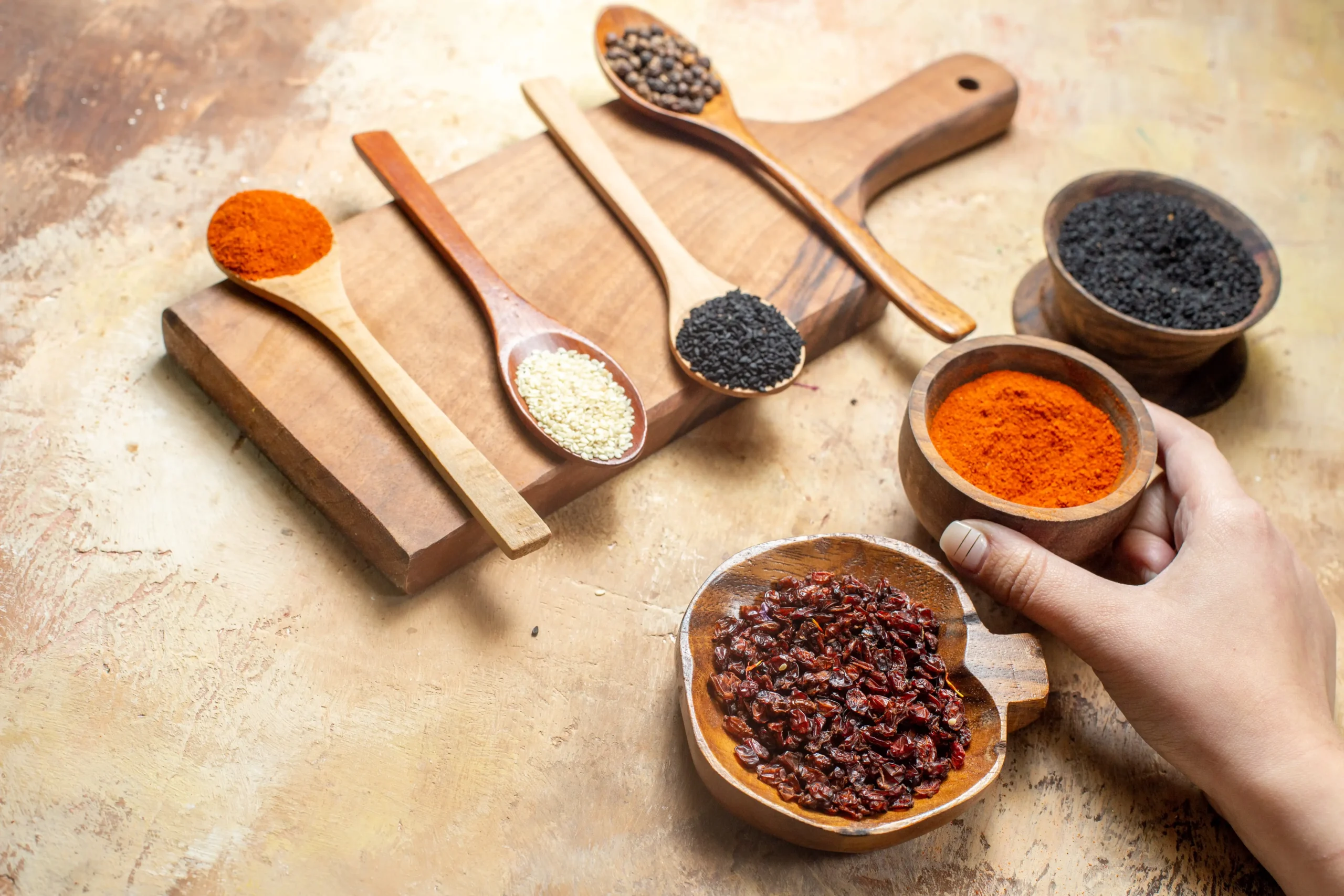Kerala, known as the Spice Garden of India, is blessed with a unique blend of tropical climate and geography that makes it one of the most fertile spice-producing regions in the world. The Western Ghats’ rich soil, abundant rainfall, and warm temperatures create ideal conditions for cultivating a wide range of aromatic spices. Understanding the seasonality and harvest cycles of Kerala spices is essential for traders, wholesalers, and anyone invested in India’s spice industry.
Climate and Geography Supporting Spice Cultivation
Kerala’s humid tropical climate, coupled with fertile laterite and forest soils, supports year-round spice production.
- Southwest monsoon: Enhances growth of cardamom, pepper, and ginger.
- Northeast monsoon: Crucial for turmeric and nutmeg.
- High-altitude regions: Favor the cultivation of premium cardamom and black pepper.
This rich climate and geography ensure a consistent supply of high-quality spices for both domestic and international markets.
Major Kerala Spices and Their Growing Seasons
Kerala produces some of the most sought-after spices in the world. Here are the major Kerala spices and their seasonal cycles:
1. Black Pepper (King of Spices)
- Flowering: May–June
- Harvesting: December–February
Kerala’s high humidity and shaded plantations help produce bold, aromatic peppercorns.
2. Cardamom (Green Gold)
- Flowering: April–June
- Harvesting: August–February
Grown mainly in Idukki’s hill ranges, cardamom requires cool weather and frequent rainfall.
3. Turmeric
- Planting: May–June
- Harvesting: January–March
Turmeric thrives after the monsoon and is sun-cured for its bright yellow color.
4. Ginger
- Planting: May–June
- Harvesting: December–February
Kerala produces pungent and fibrous ginger ideal for cooking and medicinal use.
5. Nutmeg & Mace
- Flowering: Year-round
- Harvesting: June–August & December–January
These spices grow especially well in central Kerala’s warm lowlands.
Seasonal Patterns & Harvest Cycles
Kerala’s seasonal patterns & harvest cycles are determined mainly by the monsoon rains.
- Pre-monsoon (Feb–May): Land preparation, planting turmeric and ginger.
- Monsoon (June–September): Rapid vegetative growth of pepper, cardamom, and ginger.
- Post-monsoon (October–December): Maturation stage for pepper and nutmeg.
- Winter (January–March): Peak harvest for turmeric, ginger, and black pepper.
These natural cycles ensure a staggered availability of spices throughout the year.
Stages of Spice Cultivation & Harvest in Kerala
Each spice goes through a structured journey from planting to processing. The general stages of spice cultivation & harvest in Kerala include:
- Land Preparation: Clearing, ploughing, adding organic manure.
- Planting: Usually at the onset of the monsoon for most spices.
- Growth & Maintenance: Shade management, irrigation, mulching, and pest control.
- Flowering & Fruiting: Dependent on rainfall and temperature variations.
- Harvesting: Hand-plucking or cutting depending on the spice.
- Primary Processing: Washing, boiling, drying, grading.
Kerala farmers follow traditional methods fine-tuned over generations.
Post-Harvest Processing of Kerala Spices
Proper post-harvest processing is crucial to preserve aroma, flavor, and shelf life. Key practices include:
- Sun drying or mechanical drying for pepper, turmeric, and ginger.
- Smoke drying in some regions to enhance flavor.
- Polishing, grading, and sorting to prepare spices for export.
- Steam sterilization for high-quality export-grade spices.
This ensures Kerala spices maintain their global reputation for purity and richness.
Storage Techniques for Kerala Spices
Correct storage techniques help maintain quality long after harvest.
- Airtight containers protect from humidity.
- Cool, dark storage spaces prevent loss of color and aroma.
- Vacuum-sealed or nitrogen-flushed packs for exporting whole spices.
- Moisture-proof bags for turmeric, pepper, and ginger powders.
At bulk level, spices are stored in jute bags, HDPE containers, and climate-controlled warehouses to prevent spoilage.
Conclusion
Kerala’s spice industry thrives because of its natural climate advantages, seasoned agricultural knowledge, and meticulous post-harvest practices. Understanding the seasonality and harvest cycles of Kerala spices helps buyers, wholesalers, and exporters plan better and ensure consistent supply throughout the year.


